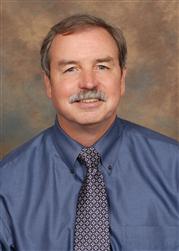 Message from Frank McCormack, MD, Division Director of Pulmonary, Critical Care & Sleep Medicine
Message from Frank McCormack, MD, Division Director of Pulmonary, Critical Care & Sleep Medicine
Dear Colleague:
Greetings from the University of Cincinnati Medical Center Division of Pulmonary, Critical Care, & Sleep Medicine. Starting in 2015, we are pleased to share Pulmonary Insights, an educational resource with information on our ongoing research in rare lung disease, as well as innovative diagnostics and therapeutics that have resulted. Our goal is to collaborate with our peers, using Pulmonary Insights as one of many ways to create a dialogue with you – fellow physicians who seek the best ways to care for patients.
Research in lymphangioleiomyomatosis (LAM) has been particularly rewarding. We studied the safety and efficacy of the drug sirolimus (rapamycin) in an NIH-funded randomized controlled trial called MILES based at our academic health center and conducted by physician scientists here and around the world. Since the New England Journal of Medicine published the findings in 2011, sirolimus has become the standard of care, and more than one-third of all LAM patients in the US are now taking the drug. The trial was cited by the Clinical Research Forum as a Top 10 Clinical Research Achievement in the US for 2011 and by the Institute of Medicine as an exemplar of translational research in their report on the State of the Clinical and Translational Science Awards Program in 2013.
We are fortunate to partner with Cincinnati Children’s Hospital Medical Center (CCHMC), which has produced great strides in our understanding of pulmonary fibrosis, pulmonary alveolar proteinosis, and pediatric interstitial lung disease. Recently, we received a multi-million dollar NIH grant to support our joint efforts in rare lung disease, in part through the UC/CCHMC Translational Pulmonary Science Center (TPSC), to advance the mission of conducting research that improves human health, trains research fellows, informs physicians and educates the public.
Through Pulmonary Insights, we hope to keep you informed of the latest advances in rare lung disease that may help with management of your more unusual patients. I encourage you to reach out directly to the physicians whose work is profiled, and I look forward to sharing more with you as we continue our efforts to advance pulmonary science.
Sincerely,
Frank McCormack, MD
Director, Division of Pulmonary, Critical Care & Sleep Medicine
Professor of Medicine, Department of Internal Medicine,
UC College of Medicine

